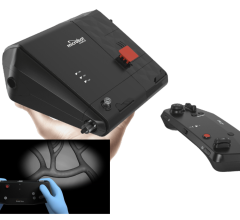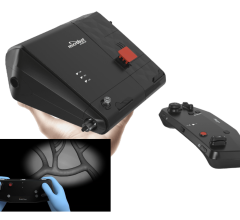
November 11, 2011 – Boston Scientific reported results from the EVOLVE first human use trial demonstrating the non-inferiority of the Synergy everolimus-eluting stent system compared to the Promus Element everolimus-eluting stent system in treating de novo coronary artery lesions. The trial provided 30-day clinical and six-month angiographic primary endpoint data evaluating the safety and effectiveness of the bioabsorbable polymer-coated Synergy stent. Results were presented today during a late-breaking clinical session by professor Ian T. Meredith, M.B.B.S., Ph.D., director of MonashHeart, Monash Medical Centre, Melbourne, Australia, and principal investigator of the trial, at the Cardiovascular Research Foundation's annual Transcatheter Cardiovascular Therapeutics (TCT) scientific symposium in San Francisco.
The prospective, randomized, single-blind, non-inferiority trial enrolled 291 patients at 29 sites in Europe, Australia and New Zealand. Patients were randomized to either one of two dose formulations of everolimus used on the Synergy stent, which employs an ultra-thin abluminal bioabsorbable polymer, or to the commercially available Promus Element stent, which employs the everolimus drug and a permanent durable polymer. One formulation of the Synergy stent used an everolimus dose and release profile similar to the Promus Element stent, while the second formulation of the Synergy stent used a similar release profile but half the dose of everolimus.
"The Synergy stent met the primary non-inferiority endpoint of six-month late loss compared to the Promus Element stent, demonstrating effectiveness of drug elution from this abluminal bioabsorbable polymer," said Meredith. "The platform also appears to be safe, with very low rates of myocardial infarction and revascularization and no reported cardiac deaths or stent thrombosis. The Synergy stent tent is designed to address potential limitations with durable polymer coatings used on currently available drug-eluting stents, which may be associated with chronic inflammation and impaired healing. The impressive clinical and angiographic results from EVOLVE bode well for this innovative new coronary stent technology."
The primary angiographic endpoint of independently adjudicated mean late loss at six months was 0.10 mm for the Synergy stent and 0.13 mm for the half-dose Synergy stent, compared with 0.15 mm for the Promus Element stent (p<0.001 for the non-inferiority comparison for both Synergy doses versus Promus Element). Additional six-month angiographic outcomes for diameter stenosis and binary restenosis showed no statistical differences between the Synergy and Promus Element stents.
The trial met the primary clinical endpoint of target lesion failure (TLF) at 30 days, defined as target-vessel-related cardiac death, target-vessel-related myocardial infarction (MI) or ischemia-driven target lesion revascularization (TLR). At 30 days, TLF in both Synergy stent arms was not statistically different from the Promus Element stent (1.1 percent for the Synergy stent versus 0 percent for the Promus Element stent, p=0.49 for superiority comparison, and 3.1 percent for the half-dose Synergy stent, p=0.12 for superiority comparison with the Promus Element stent). TLF continued to show no significant differences among the three stent groups out to six months with rates of 2.2 percent for the Synergy stent versus 3.1 percent for the Promus Element stent (p=1.00) and 4.1 percent for the half-dose Synergy stent (p=0.72 versus the Promus Element stent). Clinical follow-up at six months demonstrated no events for cardiac death, Q-wave MI and stent thrombosis. MI was 1.1 percent for the Synergy stent, 0 percent for the Promus Element stent (p=0.49) and 3.1 percent for the half-dose Synergy stent (p=0.25), all presenting as Non-Q-wave MI. TLR was 1.1 percent for the Synergy stent, 3.1 percent for the Promus Element stent (p=0.62) and 1 percent for the half-dose Synergy stent (p=0.62).
The Synergy stent uses a bioabsorbable PLGA polymer and everolimus drug combination to create an ultra-thin, uniform coating applied to the outer (abluminal) surface of the stent. After the drug has been delivered, the bioabsorbable coating is designed to resorb within four months, leaving only a bare-metal stent. This technology is designed to provide the same degree of restenosis reduction as a conventional drug-eluting stent while offering faster and more complete vessel healing after stent implantation, which could potentially reduce the duration of post-procedure dual antiplatelet therapy. The Synergy stent features the same proprietary platinum chromium alloy and similar stent design used in the Promus Element stent to enable thinner struts, increased conformability, deliverability and flexibility while reducing recoil and improving visibility.
In the United States, the Synergy stent and the Promus Element stent are investigational devices, limited by applicable law to investigational use only and not available for sale.
For more information: www.bostonscientific.com


 November 18, 2024
November 18, 2024 







